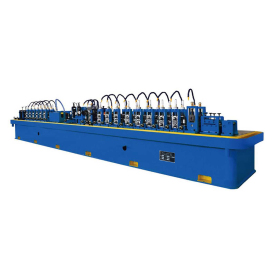[Cost-effective ERW tube mill options]Exploring Cost-effective ERW Tube Mill Options for Small and Medium Enterprises: A Guide to Maximizing Efficiency and Profitability
News 2024-12-26

Exploring Cost-effective ERW Tube Mill Options for Small and Medium Enterprises: A Guide to Maximizing Efficiency and Profitability
Electric Resistance Welded (ERW) tube mills are essential for industries that rely on high-quality steel tubing. These mills offer a cost-effective solution for manufacturing a diverse range of tube and pipe products used in construction, automotive, and various engineering applications. While the initial investment in ERW tube mills may seem daunting, small and medium enterprises can find cost-effective options that maximize production efficiency and profitability. This article explores the best cost-effective ERW tube mill options available today.
Understanding ERW Tube Mills

Exploring Cost-effective ERW Tube Mill Options for Small and Medium Enterprises: A Guide to Maximizing Efficiency and Profitability
Key Considerations for Cost-effective ERW Tube Mills
When selecting cost-effective ERW tube mill options, businesses should consider several key factors:
1. **Initial Investment and Operating Costs**: The up-front costs of purchasing a tube mill can vary widely. However, it is essential to consider not only the purchase price but also the ongoing operating costs, including power consumption, maintenance, and labor. Companies should seek mills that offer high efficiency with lower operational expenses.
2. **Production Capacity**: Evaluate the production capacity of potential mills. For small and medium enterprises, it's essential to choose a mill that can handle the required output without significant downtime. Many manufacturers offer models tailored for lower production volumes, combining efficiency with affordability.

Exploring Cost-effective ERW Tube Mill Options for Small and Medium Enterprises: A Guide to Maximizing Efficiency and Profitability
4. **Flexibility and Versatility**: The ability to produce various tube sizes and types can be a significant advantage, particularly for businesses looking to diversify their product offerings. Cost-effective ERW tube mills that can easily switch between different specifications will add considerable value.
5. **After-sales Support**: When purchasing a tube mill, ensure that the manufacturer provides reliable after-sales support. Prompt maintenance and spare parts availability can significantly reduce downtime and associated costs, making it an essential aspect when considering cost-effective options.
Cost-effective ERW Tube Mill Options
1. **Used and Refurbished Mills**: One of the most cost-effective ways to acquire an ERW tube mill is by purchasing used or refurbished equipment. Many manufacturers upgrade their machines regularly, allowing smaller enterprises to acquire high-quality mills at a fraction of the original price.
2. **Entry-Level Models**: Some manufacturers provide entry-level ERW tube mills designed explicitly for small operations. These models, equipped with essential features, offer the necessary functionality at lower prices. They may not have all the bells and whistles of high-end models, but they can deliver excellent results for startups or smaller operations.
3. **Modular Systems**: Modular ERW tube mills allow users to start with a basic setup and add components as needed. This pay-as-you-grow model enables businesses to invest in their production capabilities gradually without incurring massive initial costs.
4. **Local Suppliers and Manufacturers**: Often, local manufacturers offer competitive prices for their ERW tube mills due to lower shipping costs and tailored support services. Exploring local options can be beneficial for companies looking to save money and enhance their support network.
5. **Leasing Options**: If purchasing a mill outright isn’t feasible, consider leasing options. Many manufacturers offer financing arrangements that allow companies to avoid large capital expenditures while still leveraging the benefits of advanced tube manufacturing technology.
Conclusion
Finding cost-effective ERW tube mill options is crucial for small and medium enterprises looking to establish or expand their production capabilities. By carefully considering initial investments, operational costs, technology, flexibility, and support, businesses can make informed decisions that lead to enhanced efficiency and profitability. Investing in the right ERW tube mill can position companies for success in a competitive marketplace, ensuring they can meet the demands of their customers while maintaining a healthy bottom line.
